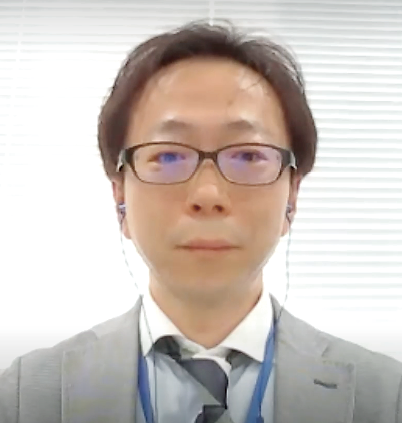October 2022

Regional development initiatives are happening around Japan, taking a variety of different approaches to the goals of relieving the overconcentration of people in Tokyo, putting the brakes on depopulation in rural regions, and revitalizing Japan as a whole, including DX, human resource development, and regional co-creation. In response, Hitachi teamed up with Hokkaido University to open the Hitachi Hokkaido University Laboratory in June 2016 as a facility where they can collaborate on open innovation. A key focus of the laboratory is to conduct joint research on resolving the various societal challenges currently facing Hokkaido, which include aging demographics and a low birthrate, depopulation, a stagnating regional economy, and global warming. This article is one of three reports on the presentations given at the Third Forum of Hokkaido University and Hitachi Hokkaido University Laboratory held in February 2022. Part 1 covers the opening greetings from the host and co-hosts and the keynote address given by Kiyohiro Houkin, President of Hokkaido University, also describing work by Hitachi Hokkaido University Laboratory and the Hokkaido University COI on addressing the low birthrate.
 Shinji Nishimura
Shinji Nishimura
General Manage, the Center for Exploratory Research, Research & Development Group, Hitachi, Ltd.
 Shunsuke Tsuchiya
Shunsuke Tsuchiya
Vice Governor, Hokkaido Prefecture
 Akihiko Mayumi
Akihiko Mayumi
Chairman, the Hokkaido Economic Federation
The third Forum of Hokkaido University and Hitachi Hokkaido University Laboratory was held online. Since the Hitachi Hokkaido University Laboratory was opened in 2016 as an on-campus facility where Hitachi can engage in open innovation, it has worked with local government, business, and other relevant institutions on a variety of initiatives that seek to overcome the challenges facing Hokkaido, which include depopulation and its low birthrate, natural disasters, environmental conservation, and the decline of local industry.
Drawing on the concept of symbiotic urban development that seeks to build a better future by using data to link together what is happening in the fields of health, industry, and the environment, the forum addressed the three topics of inclusive communities, making the region a leader in the field of renewable energy, and the development of local industry. Speaking about the forum, Shinji Nishimura, General Manager of the Center for Exploratory Research, Research & Development Group, Hitachi, Ltd., said that he wanted to use it as an opportunity to “present the research we have done to date on this concept and topics, and to inform people about what we have planned for the future.”
Hokkaido aims to reduce greenhouse gas emissions to net zero by 2050. To do so, the prefecture has embarked on its Zero Carbon Hokkaido program, which seeks to take maximum advantage of the region’s rich natural resources as it works in parallel on decarbonization, economic revitalization, and sustainable regional development. In his opening greeting as event co-host, Vice Governor of Hokkaido Shunsuke Tsuchiya had the following to say about this policy.
“Given that the challenge of decarbonization extends across such diverse areas as the consumer, industrial, and energy sectors, overcoming it will require not only the technologies we already have, but also new techniques and scientifically based knowledge. To this end, we signed a comprehensive agreement in April 2021 to collaborate with Hokkaido University and are participating in the work of both the university’s Center of Innovation (COI) and COI-NEXT, an innovative platform for co-creation. As we strive to revitalize our region through collaboration between industry, academia, and government, I hope that this forum will play its part in co-creating our future.”
Akihiko Mayumi, Chairman of the Hokkaido Economic Federation, also spoke in his role of co-host, with the following to say about how the long-running COVID-19 pandemic is having a major impact on Hokkaido’s economy.
“Tourism and food are key industries in Hokkaido and both have been severely set back by this extended pandemic. Despite this, digital transformation (DX) and moves inspired by the pandemic to relieve the overconcentration of people in Tokyo represent a major opportunity to attract people to our region and to revitalize our economy and industry. Through this forum, I hope that we can share ideas for building a bright future for Hokkaido that will help to spur activity and strengthen collaboration on overcoming the challenges we face.”
 Kiyohiro Houkin
Kiyohiro Houkin
President, Hokkaido University
The concept of planetary boundaries relates to whether or not sustainable development can be achieved in order for human activity to continue, quantifying this in terms of nine different indices. It shows that a collision between global environmental systems and human activity is already underway and that we face a challenge in how we utilize Earth’s finite environment and resources. A key consideration in addressing this question is that of trust.
As in the tragedy of the commons talked about in the discussion between Hitachi CTO Norihiro Suzuki, who opened the forum, and Naoko Ishii, Director of the Center for Global Commons, the University of Tokyo, it is inevitable when large numbers of people indiscriminately seek to exploit a shared resource that the resource will end up being depleted. Historically, however, there have been cases where local communities have established a sustainable resource cycle by imposing certain rules on the resource’s use. Whereas, in the past, trust was something that only existed at the local community level, it will be absolutely vital for the world of Society 5.0 to extend this sort of trust more expansively across both time and space.
Whereas the Hitachi-UTokyo Laboratory and other Hitachi embedded laboratories located in different parts of Japan have taken a “seed-oriented”*1 approach to global issues, the Hitachi Hokkaido University Laboratory has, since it opened in 2016, pursued “needs-oriented”*2 research in which the laboratory has set out to address the various regional issues confronting Hokkaido, namely its aging demographics and low birthrate, depopulation, and the stagnating regional economy.
While seeking to become a new regional academic hub that plays a part in resolving the challenges facing both its own region and the wider world, Hokkaido University is in step with Hitachi’s grand vision of collaborative creation with local residents and a wide variety of other stakeholders. As it works with local government and the public to address challenges that are manifest in Hokkaido but also exist throughout the world, and with a view to establishing large and more broadly inclusive forums, Hitachi Hokkaido University Laboratory is seeking to become a flagship for the ideals of “community development,” “new trust,” and “new capitalism” (see Figure 1).
 Yasuhiro Takeda
Yasuhiro Takeda
Corporate Officer and Deputy Director, R&D Division, Morinaga Milk Industry Co., Ltd.
Japan continues to experience a low birthrate for a variety of reasons, with more women in the workforce and a higher proportion remaining unmarried, not to mention the financial burden of raising children. At the same time, the percentage of infants born underweight also represents a child health issue.
The theory of the developmental origins of health and diseases (DOHaD) proposes that infants with a low birthweight who experienced a lack of nutrition in utero are at greater risk of lifestyle diseases in adulthood. Despite the extensive availability of food in Japan, the country is among the worst in the world in terms of the percentage of infants that are born underweight, with many instances of young women suffering from new forms of nutritional deficiency brought about by a desire to remain thin (see Figure 2).
In response, Hokkaido University COI has obtained the cooperation of Iwamizawa City in Hokkaido to undertake surveys and programs aimed at reducing underweight births. Specifically, a study of mothers and children in Iwamizawa has been undertaken that looked at the following two health indicators developed from the DOHaD hypothesis, involving a nutritional survey and analyses of breastmilk and infant stool.
As a result of this ongoing work, the percentage of underweight births in Iwamizawa City fell from 10.4% in 2015 to 6.3% in 2019. This reduction of 4.1% exceeded by a large margin the target of reducing underweight births by 0.2% over the same period set by the Healthy Parents and Children 21 campaign*3 of the Ministry of Health, Labour and Welfare.
Building on this success, the Hokkaido University COI is working through COI-NEXT to address issues relating to the low birthrate that are even further upstream than low birth weights, including the youth cohort and pre-conception care. The ultimate aim is to increase the total fertility rate in Iwamizawa City from 1.1 in 2020 to 1.4 in 2030.
Figure 2 | Trend in Percentage of Children Born with Low Birthweight 
 Takahiro Nakamura
Takahiro Nakamura
Manager, Hitachi Hokkaido University Laboratory, Research & Development Group, Hitachi, Ltd.
Having collected and analyzed medical samples and healthcare data covering the perinatal period as part of the mother and child health study undertaken with the cooperation of Iwamizawa City since 2016, the Hokkaido University COI is seeking to utilize this to operate services that provide feedback to the public and medical professionals.
To facilitate this, Hitachi has developed an integrated health data platform that incorporates a database and analysis platform. The former utilizes an identity-matching database that uses resident record codes to link with health data that in the past was scattered across different locations, including information about the health of the mother and child, perinatal healthcare, and medical and care billing details (see Figure 3).
The analysis platform consists of the following three components.
These initiatives aimed at reducing the percentage of underweight births have garnered considerable recognition, with the Hokkaido University COI being awarded the Science Council of Japan (SCJ) President’s Award at the Third Japan Open Innovation Prize (JOIP) in February 2021. In July of the same year, the work was also featured in a special “Focal Point” issue of Nature magazine. Having also played a central role in this work, Iwamizawa City was recognized as a Platinum City at the Ninth Annual Platinum Vision Awards hosted by the Platinum Society Network in October 2021.
Future plans include going beyond maternity care to expand platforms for addressing the low birthrate and to roll out new health services in partnership with the private sector.
 Naoko Arata
Naoko Arata
General Manager, Division of Maternal Medicine, the Center for Maternal-Fetal, Neonatal and Reproductive Medicine, the National Center for Child Health and Development
Pre-conception care refers to activities aimed at improving the health of the younger generation, both male and female, to foster their future health by helping them enjoy a better quality of life, also increasing the likelihood of a healthier pregnancy and birth leading to better health for the next generation of children. Especially in the case of mothers and children, because illness or lifestyle habits prior to pregnancy can affect pregnancy, birth, and newborn health, there is value in promoting health through improved health literacy.
In developed nations, higher levels of life satisfaction (a personal issue) and a lower gender gap (a societal issue) tend to be associated with higher birthrates. Looking internationally, whereas comparatively high-birthrate countries like France and Sweden have long pursued comprehensive policies that promote the balancing of work and childcare, education about sex and reproduction remains below international levels in Japan.
In response, Hokkaido University COI-NEXT is bringing together healthcare, schools, community health, employment, municipalities, and youth to work on resolving the personal and societal issues that underlie the low birthrate. In addition to the Hokkaido University COI’s work on care for mothers and children, by using pre-conception care to gain a deeper understanding of the physical and mental condition of young people, the Hokkaido University COI NEXT is seeking to create a society in which people can enjoy living their own lives alongside others, one that reduces the gender gap while also improving the chances for women to become pregnant when they want to (see Figure 4).
Figure 4 | Achieving Health, Wellbeing, and Dignity for Children and Young People through Comprehensive Sex Education 